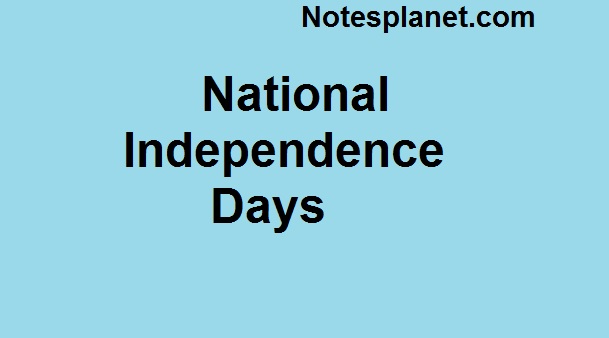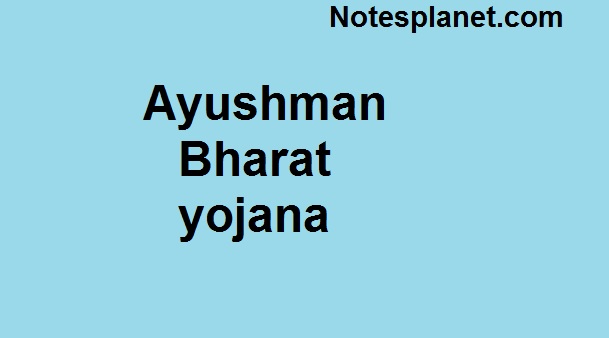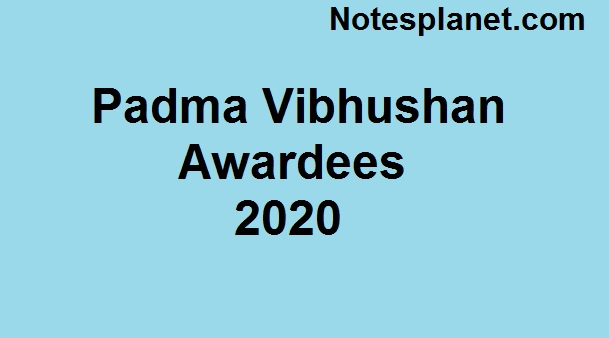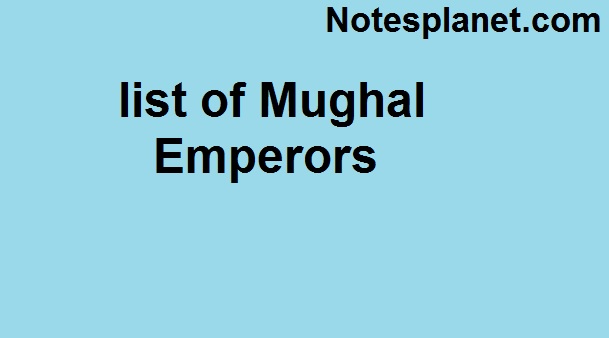National Independence Days
A freedom day is a yearly occasion celebrating the commemoration of a country’s autonomy or statehood, typically in the wake of stopping to be a gathering or part of another country or state, or all the more infrequently after the finish of military occupation. India Celebrate National Independence Days on 15 August 1947.
National Independence Days:-
| S.No. | Country | Date |
| 1. | Afghanistan | 19 August 1919 |
| 2. | Albania | November 28, 1912 |
| 3. | Algeria | July 5, 1962 |
| 4. | Angola | November 11, 1975 |
| 5. | Antigua and Barbuda | November 1, 1981 |
| 6. | Argentina | July 9, 1816 |
| 7. | Armenia | September 21, 1991 |
| 8. | Austria | October 26, 1955 |
| 9. | Azerbaijan | October 18, 1918, and May 28, 1991 |
| 10. | Bahrain | December 16, 1971 |
| 11. | Bangladesh | March 26, 1971 |
| 12. | Barbados | November 30, 1966 |
| 13. | Belarus | July 3, 1944 |
| 14. | Belgium | July 21, 1831 |
| 15. | Benin | August 1, 1960 |
| 16. | Bolivia | August 6, 1825 |
| 17. | Brazil | September 7, 1822 |
| 18. | Brunei | January 1, 1984 |
| 19. | Bulgaria | September 22, 1908 |
| 20. | Cambodia | November 9, 1953 |
| 21. | Central African Republic | August 13, 1960 |
| 22. | Chile | February 12, 1818 |
| 23. | Colombia | July 20, 1810 |
| 24. | Cuba | May 20, 1902 |
| 25. | Czech Republic | October 28, 1918 |
| 26. | Congo | June 30, 1960 |
| 27. | Djibouti | June 27, 1977 |
| 28. | Dominica | November 3, 1978 |
| 29. | Dominican Republic | February 27, 1844 |
| 30. | Timor-Leste | May 20, 2002 |
| 31. | Ecuador | August 10, 1809, and May 24, 1822 |
| 32. | El Salvador | September 15, 1821 |
| 33. | Eritrea | May 24, 1993 |
34. |
Estonia |
On February 24, 1918 |
| 35. | Fiji | October 10, 1970 |
| 36. | Finland | December 6, 1917 |
| 37. | Georgia | May 26, 1918 |
| 38. | Ghana | March 6, 1957 |
| 39. | Greece | March 25, 1821 |
| 40. | Grenada | February 7, 1974 |
| 41. | Guatemala | September 15, 1821 |
| 42. | Guinea | October 2, 1958 |
| 43. | Guyana | May 26, 1966 |
| 44. | Haiti | January 1, 1804 |
| 45. | Honduras | September 15, 1821 |
| 46. | Iceland | December 1, 1918 |
| 47. | India | August 15, 1947 |
| 48. | Indonesia | August 17, 1945 |
| 49. | Iran | February 11, 1979 |
| 50. | Ireland | April 24, 1916 |
| 51. | Israel | May 14, 1948 |
| 52. | Jamaica | August 6, 1962 |
| 53. | Jordan | May 25, 1946 |
| 54. | Kazakhstan | December 16, 1991 |
| 55. | Kenya | December 12, 1963 |
| 56. | Korea, North | September 9, 1948 |
| 57. | Korea, South | August 15, 1945 |
| 58. | Kuwait | June 19, 1961 |
| 59. | Kyrgyzstan | August 31, 1991 |
| 60. | Latvia | November 18, 1918 |
| 61. | Lebanon | November 22, 1943 |
| 62. | Lesotho | October 4, 1966 |
| 63. | Liberia | July 26, 1847 |
| 64. | Libya | December 24, 1951 |
| 65. | Lithuania | February 16, 1918 |
| 66. | Madagascar | June 26, 1960 |
| 67. | Malawi | July 6, 1964 |
68. |
Malaysia |
August 31, 1957 |
| 69. | Maldives | July 26, 1965 |
| 70. | Mali | September 22, 1960 |
| 71. | Malta | September 21, 1964 |
| 72. | Mauritius | March 12, 1968 |
| 73. | Mexico | September 16, 1810 |
| 74. | Moldova | August 27, 1991 |
| 75. | Mongolia | November 26, 1921 |
| 76. | Montenegro | May 21, 2006 |
| 77. | Morocco | November 18, 1956 |
| 78. | Mozambique | June 25, 1975 |
| 79. | Burma | January 4, 1948 |
| 80. | Namibia | March 21, 1990 |
| 81. | Netherlands | May 5, 1945 |
| 82. | Nicaragua | September 15, 1821 |
| 83. | Niger | August 3, 1960 |
| 84. | Nigeria | October 1, 1960 |
| 85. | Pakistan | August 14, 1947 |
| 86. | Panama | November 3, 1903 |
| 87. | Papua New Guinea | September 16, 1975 |
| 88. | Paraguay | May 15, 1811 |
| 89. | Peru | July 28, 1821 |
| 90. | Philippines | June 12, |
| 91. | Poland | November 11, 1918 |
| 92. | Portugal | December 1, 1640 |
| 93. | Qatar | December 18, 1878 |
| 94. | Macedonia [FYROM] | September 8, 1991 |
| 95. | Romania | May 9, 1877 |
| 96. | Russia | June 12, 1990 |
| 97. | Rwanda | July 1, 1962 |
| 98. | Saint Kitts and Nevis | September 19, 1983 |
| 99. | Samoa | June 1, 1962 |
| 100. | Sao Tome and Principe | July 12, 1975 |
| 101. | Serbia | February 15, 1804 |
| 102. | Seychelles | June 29, 1976 |
| 103. | Sierra Leone | April 27, 1961 |
| 104. | Singapore | August 9, 1965 |
| 105. | Slovakia | July 17, 1992 |
| 106. | Slovenia | December 26, 1990 |
| 107. | Solomon Islands | July 7, 1978 |
| 108. | South Africa | December 11, 1931 |
| 109. | Sri Lanka | February 4, 1948 |
| 110. | Sudan | January 1, 1956 |
111. |
Suriname |
November 25, 1975 |
| 112. | Swaziland | September 6, 1968 |
| 113. | Switzerland | August 1, 1291 |
| 114. | Tajikistan | September 9, 1991 |
| 115. | Tanzania | December 9, 1961 |
| 116. | Gambia | February 18, 1965 |
| 117. | Togo | April 27, 1960 |
| 118. | Tonga | June 4, |
| 119. | Trinidad and Tobago | August 31, 1962 |
| 120. | Tunisia | March 20, 1956 |
| 121. | Turkey | October 29, 1923 |
| 122. | Turkmenistan | October 27, 1991 |
| 123. | Ukraine | August 24, 1991 |
| 124. | United Arab Emirates | December 2, 1971 |
| 125. | United States | July 4, 1776 |
| 126. | Uruguay | August 25, 1825 |
| 127. | Uzbekistan | September 1, 1991 |
| 128. | Vanuatu | July 30, 1980 |
| 129. | Holy See (Vatican City) | February 11, 1929 |
| 130. | Venezuela | July 5, 1811 |
| 131. | Vietnam | September 2, 1945 |
| 132. | Yemen | November 30, 1967 |
| 133. | Zambia | October 24, 1964 |
| 134. | Zimbabwe | April 18, 1980 |
| Name | Related Link |
| Notesplanet | |
| Notesplanet1 |
Is it 71st or 72nd Independence Day? What really happened on July 4th 1776? Is this 74th Independence Day? Which country has no Independence Day? 74th independence day, independence day date, independence day of all countries pdf, which country celebrate independence day on 15 august other than, India, England independence day, countries without independence day
Previous Post Link: https://notesplanet.com/elephant-reserve-in-india/



















